Video
vimeo
Hellweg and Cloutier - Hill Model - Violin Peg in Mountain Mahogany from Hellweg & Cloutier on Vimeo.
Spin shot of a single Hellweg and Cloutier Hill model Violin peg in Mountain Mahogany wood.
0 notes
Video
vimeo
heart-model-violin-pegs-spin from Hellweg & Cloutier on Vimeo.
0 notes
Video
vimeo
Tailpeice - P3 Woven - Violin (109mm) - Mountain Mahogany from Hellweg & Cloutier on Vimeo.
Crafted from the heartwood of the Mountain Mahogany, a species native to North America. This supreme wood, known for its unique density and hardness, provides the ideal hardness-to-weight ratio, ensuring perfect vibration transmission from the strings to the body of the violin, refining the violin’s sound, and contributing significantly to the violin’s acoustic performance. An instrument’s tailpiece can be more then just an accessory, it can be a symbol of resilience and beauty.
This new woven design, coupled with the inherent reddish brown color of the wood, imbues the tailpiece with both form and function. It is an exemplar of how the right materials, when married with skilled craftsmanship, can make a world of difference in the quest for the perfect look and sound, making the violin not just an instrument, but a symphony of nature’s gifts and human ingenuity.
0 notes
Video
vimeo
Can you Slide and Glissando on a Rippleboard Fingerboard? from Hellweg & Cloutier on Vimeo.
One of the most frequent questions we get about the Rippleboard fingerboard is “Does it still allow slides or glissando while performing?” As shown in the video above, the answer is a resounding Yes!
Q: What is a Slide or Glissando?
A: In simple terms, a slide on a violin is quickly moving your finger to a new spot on the string to play a different note, while a glissando is slowly and smoothly dragging your finger up or down the string, hitting all the notes in between the start and end points, like the sound of a siren.
Q: Does it change the way you play?
A: A Rippleboard fingerboard does not limit the ability of musicians to make use of any of their favorite performative techniques. The ripple effect on the fingerboard serves the purpose of both visually and tactile guiding the player’s fingers to the note positions, minimizing the difficulty of the instrument and creating a much more comfortable experience for the musician. The surface of the Rippleboard fingerboard remains remarkably smooth to the touch, exhibiting no limitations or tonal disruptions to the expressive elements of your current instrument playing. When playing, it is best to ignore the ripple effect and play naturally. If you focus on the ripples while practicing or press harder you can become aware of the ripples but if you play correctly, the same as you would on a legacy fingerboard, you will not feel the ripple effect even despite the benefit it provides!
0 notes
Video
vimeo
2020 H&C replica model based on the 1704 "Betts" violin by Antonio Stradivari from Hellweg & Cloutier on Vimeo.
"In the gilded glow of the morning's grace,
Dances the light on the violin's face.
Contours and curves come to play,
In the ballet of the dawn's first ray.
Wooden whispers, grains aglow,
In the symphony of color in light's gentle throw.
The violin's song, the day foretells,
As light pirouettes on its wooden swells."
A 2020 H&C replica model based on the 1704 "Betts" violin by Antonio Stradivari. "La Pucelle" replica tailpiece, "Fleur de Lis" replica pegs in Mountain Mahogany and a Rippleboard fingerboard.
0 notes
Photo

A Hellweg & Cloutier violin scroll with Mountain Mahogany "Fleur De Lis" model violin pegs and a Rippleboard
#violin#tuningpegs#fleurdelis#fingerboard#scroll#aesthetic#beautiful#violinist#viola#violist#cello#cellist#violinista#violista#cellista#symphony#orchestra#details#history#recital#practice#practicepracticepractice#audition#artisan#woodworking#stringedinstrument
12 notes
·
View notes
Photo

A Mountain Mahogany “Fleur de Lis” tailpiece on a cornerless 1704 “Betts” Stradivari model violin
#mountain mahogany#fleur de lis#tailpiece#violin tailpiece#violin#cornerless#1704#betts#stradivarius#Stradivari#antoniostradivari
5 notes
·
View notes
Photo
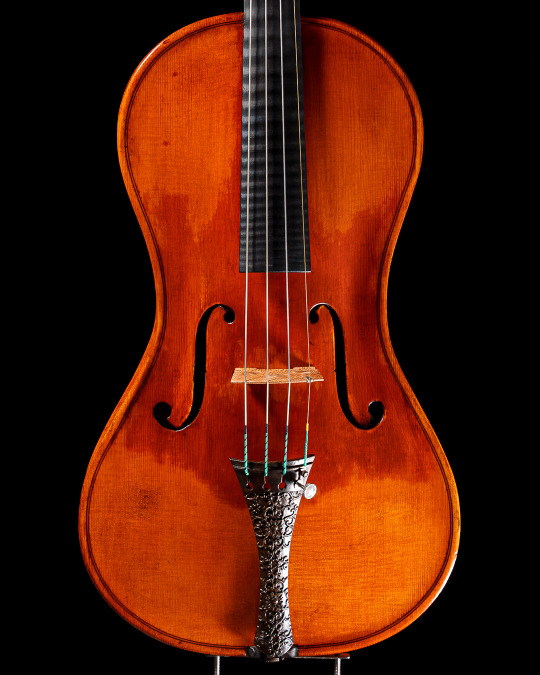
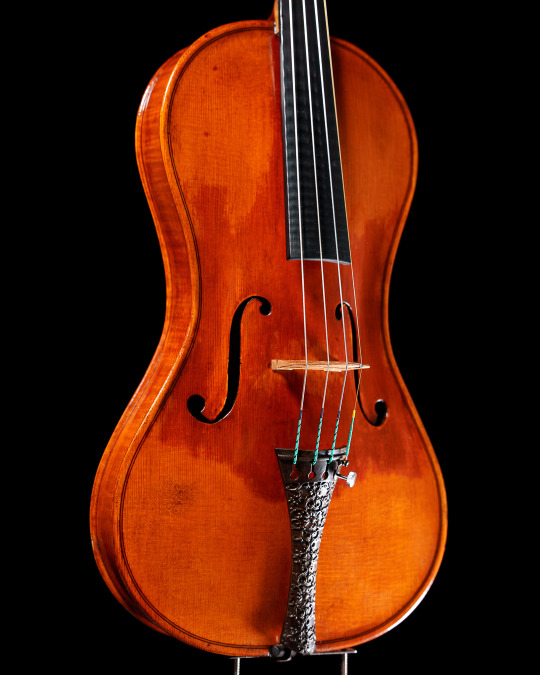
A cornerless violin with an antiqued oil finish modeled after Antonio Stradivarius’ 1704 “Betts,” featuring a darkened version of the “Daisy” tailpiece in Southern Live Oak and a Rippleboard made of Richlite
#violin#violinist#violino#violín#violinplayer#violinmusic#violinmaker#violinista#antiqued#oilfinish#stradivarius#strad#betts#liveoak#Richlite#luthier#luthieria#Woodworker#woodworking#instrumentmaking#cello#viola#ClassicalMusic#orchestra#soloist#twosetviolin#tailpiece#cremona#practicepracticepractice#fhole
1 note
·
View note
Photo


An 18th century violin featuring a thinner version of the Lady Blunt pegs in mountain mahogany and a Rippleboard made of Richlite
#violin#violinfittings#violinist#twosetviolin#twoset#practicepracticepractice#stradivarius#strad#18thcentury#cremona#violinmaker#luthier#luthiery#mountainmahogany#varnish#scrollwork#newinvention#fingerboard#viola#cello#violinista#cellist#violist#woodgrain#rarewoods#compositematerials#cncmachining#classicalmusic#soloist#stringedinstrument
13 notes
·
View notes
Photo
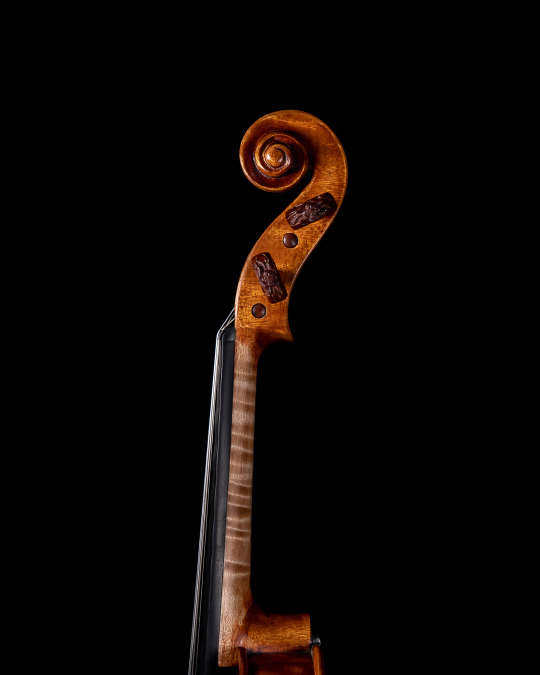
A violin featuring a fusion of Stradivari and Amati scrolls, a thicker variant of the Lady Blunt pegs in mountain mahogany, and a Rippleboard made from Richlite
#violin#violinist#stradivarius#stradivari#strad#amati#scrolls#ladyblunt#tuningpegs#mountainmahogany#richlite#twoset#twosetviolin#violinplayer#fingerboard#cello#viola#woodworking#luthier#luthieria#luthiery#classicalmusic#classicalmusicians#symphony#violist#cellist#violinart#violinmaker#violino#violín
4 notes
·
View notes
Photo

A cornerless replica of a golden period Stradivari violin, with a single-piece backplate
#violin#violinist#backplate#goldenperiod#replica#stradivarius#stradivari#strad#violinista#violinists#violinistsofinstagram#classicalmusic#soloist#orchestra#baroque#baroquemusic#fiddle#woodworking#violín#violao#cello#cellist#violist#flamedmaple#varnish#violine#violina#violinart#violi#twosetviolin
0 notes
Photo





An replica of Giuseppe Guarneri’s 1730 “Kreisler” violin, fitted with a mountain mahogany “Lady Blunt” tailpiece, “Alard” pegs, and a richlite Rippleboard
#violin#kreisler#guarneri#1730#cremona#ladyblunt#tailpiece#alard#pegs#tuningpegs#mountainmahogany#richlite#twoset#twosetviolin#cello#viola#lutier#luthiery#violinista#violinistsofinstagram#classicalmusic#soloist#stradivarius#violín#violinplayer#violinist#woodworking#housle#geige#viool
4 notes
·
View notes
Photo

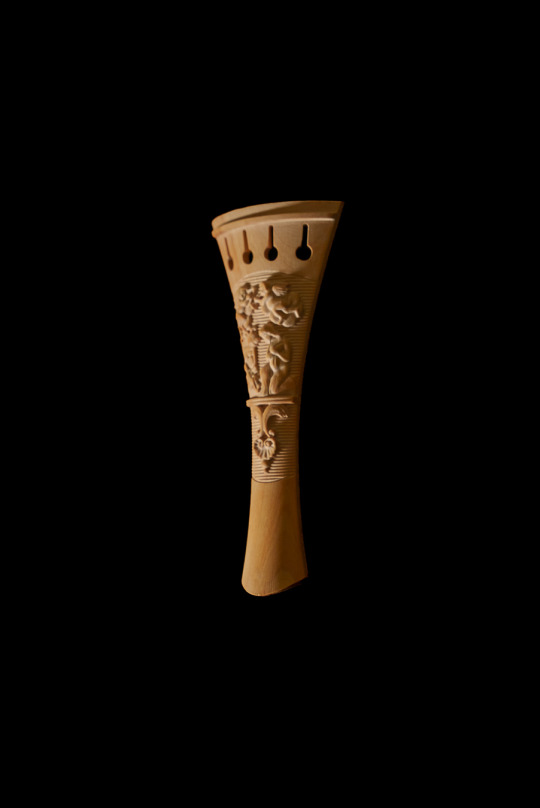
The "Messiah" model violin tailpiece in raw, untreated Boxwood. With our Boxwood fittings, we choose not to apply any buffing, wax, or finish so that your luthier can best match the color to your instrument, pegs, and/or chinrest
#violin#violín#violinist#violinplayer#violinmaker#violino#violins#violinstudent#violinista#classicalmusic#messiah#stradivarius#strad#stradivari#twosetviolin#viola#cello#violinsolo#luthier#luthiery#musiciansofinstagram#woodworking#boxwood#violine#violinart#violina#viool#housle#geige#tailpiece
1 note
·
View note
Photo

New fittings and a Rippleboard for an old violin. The “Lady Blunt” tailpiece and pegs are carved in Mountain Mahogany, while the Rippleboard is made here in Richlite
#violin#violín#violinist#violinplayer#violinmaker#violino#violins#violinstudent#violinista#classicalmusic#ladyblunt#stradivarius#strad#stradivari#twosetviolin#viola#cello#violinsolo#luthier#luthiery#musiciansofinstagram#woodworking#antique#violine#violinart#violina#viool#housle#geige#violinistsofinstagram
0 notes
Photo
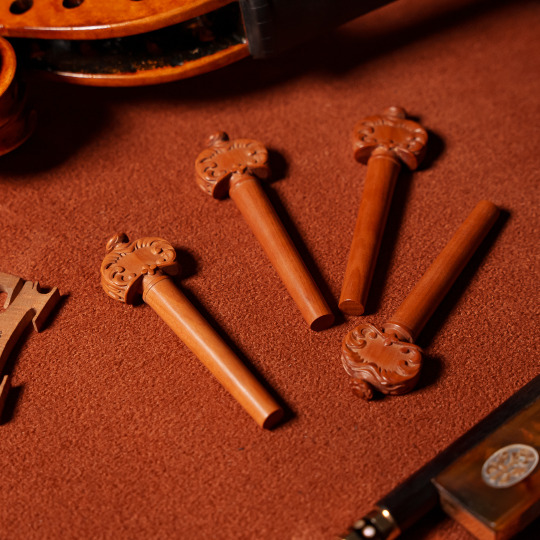
A set of mountain mahogany “Alard” tuning pegs for the violin
#violin#violín#violinist#violinplayer#violinmaker#violino#violins#violinstudent#violinista#classicalmusic#alard#stradivarius#strad#stradivari#twosetviolin#viola#cello#violinsolo#luthier#luthiery#musiciansofinstagram#woodworking#antique#violine#violinart#violina#viool#housle#geige#rarewood
1 note
·
View note
Photo

A mountain mahogany tailpiece modeled after the fittings adorned on Antonio Stradivarius’ 1709 “La Pucelle” violin. Given the natural variability of the wood, this tailpiece features a few areas of extra rare dark sections, most notably in the top left corner of the piece.
#violin#violín#violinist#violinplayer#violinmaker#violino#violins#violinstudent#violinista#classicalmusic#lapucelle#stradivarius#strad#stradivari#twosetviolin#viola#cello#violinsolo#luthier#luthiery#musiciansofinstagram#woodworking#antique#violine#violinart#violina#viool#housle#geige#rarewood
63 notes
·
View notes
Photo

Two “Hill style” violin tuning pegs. The brown peg in front is made from Mountain Mahogany, while the black peg is in Richlite, an ethically sourced alternative to the endangered Gaboon Ebony
#violin#viola#cello#violinist#violinista#violist#violista#cellist#violinstagram#violín#violinplayer#mountainmahogany#richlite#ebony#composite#luthier#luthieria#woodworking#woodworker#hill#ethicallysourced#ethicallymade#twosetviolin#musiciansofinstagram#violino#violina#viool#housle#geige#violinmaker
2 notes
·
View notes